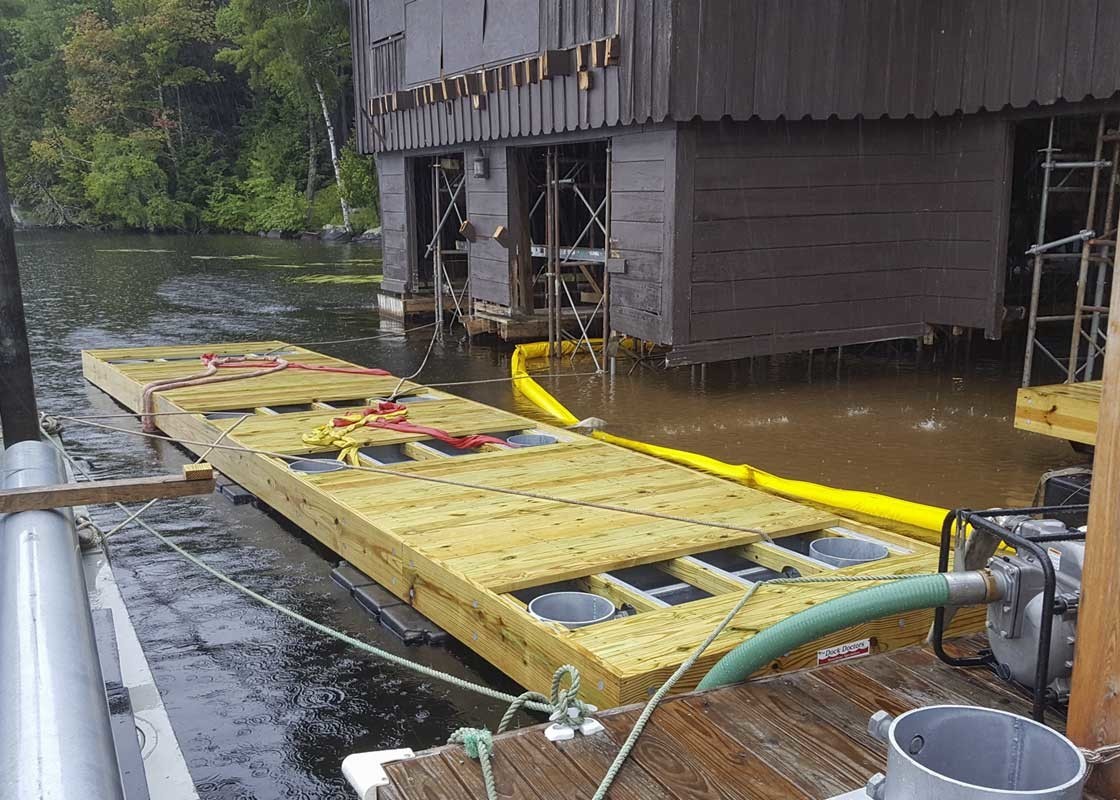Exactly How to Address Common Dock Repair Issues for Safe Water Tasks

Identifying Common Dock Issues
Identifying usual dock problems is crucial for keeping the performance and safety of your beachfront residential property. Routine inspections can assist uncover troubles prior to they end up being severe, making sure both the durability of the dock and the safety and security of those who utilize it.
One more usual issue is the destruction of flotation tools. These devices are essential for keeping the dock resilient, and any damages or punctures can trigger the dock to checklist or sink. Consistently looking for leaks or waterlogged drifts can preempt much more substantial issues.
In addition, algae and barnacle accumulation on the dock's surface area can produce unsafe and dangerous conditions. This biofouling not just poses a risk to customers but can also speed up the wear and tear of the dock products.
Lastly, inspecting for indicators of corrosion on metal parts is necessary. Rust can compromise the stability of the dock's structure, making it unsafe. By regularly determining these usual dock concerns, you can ensure that your dock remains useful and safe and secure for years to come.
Repairing Rotting Wood
When dealing with the problem of deteriorating timber on your dock, it is crucial to act promptly to prevent further wear and tear. Begin by completely checking the whole structure to identify all affected locations. Use a screwdriver to probe the wood; if it sinks in easily, the timber is most likely deteriorated and requires instant attention.
Be sure to cut back to healthy and balanced, strong wood, guaranteeing you get rid of all jeopardized product. After elimination, treat the remaining timber with a wood chemical to stop future rot.
Next, change the eliminated areas with marine-grade lumber or pressure-treated wood, which are more immune to water damage. Safeguard the new pieces with stainless-steel or galvanized bolts to stop deterioration. Furthermore, applying a waterproof sealer to the new timber can supply an extra layer of defense.
Safeguarding Loose Boards
Exactly how do you guarantee your dock remains secure and functional for all its users? One vital facet is protecting loose boards, which can or else posture substantial dangers. Loose boards not only raise the danger of tripping however can also endanger the architectural integrity of the entire dock.

For reinstallation, make use of stainless or galvanized steel screws, as these materials offer superior resistance to deterioration in aquatic atmospheres. Ensure the screws are long sufficient to permeate deep right into the underlying support structure, yet not so long that they protrude via the dock's surface area. Pre-drilling pilot holes can aid stop the wood from splitting.
Finally, preserve a normal assessment routine to identify and attend to any brand-new problems promptly. By protecting loose boards successfully, you add to the click now overall safety and security and durability of your dock, making it a trustworthy platform for water tasks.
Stabilizing Unstable Pilings
Guaranteeing the security of unsteady pilings is vital to maintaining a practical and safe dock. Unsteady pilings can endanger the entire framework, posing considerable risks to individuals and possibly resulting in pricey repair work. The initial step in supporting these crucial elements is a thorough assessment. Check out the pilings for signs of rot, damages, or changing. Use a level to examine for vertical positioning and ensure they are driven deep enough right into the substrate to give appropriate support.
If the pilings are found to be unstable, one efficient technique for reinforcement is making use of extra supporting. Cross-bracing with treated lumber or galvanized metal can significantly enhance stability. Anchor the dental braces securely to both the pilings and the dock structure to disperse loads evenly.

Normal upkeep and periodic review of the pilings' stability are essential to ensuring lasting dock security and functionality.
Changing Rusty Hardware
Resolving unsteady pilings is just one facet of preserving a dock's integrity; an additional vital concern is changing rusty equipment. In time, direct exposure to moisture and salt can result in the oxidation and rust of brackets, screws, and screws, jeopardizing the whole structure's safety and security. Routine evaluation for corrosion is vital, particularly after serious climate or seasonal changes.
When rustic equipment is determined, prompt action is needed. Begin by picking marine-grade stainless steel or galvanized equipment, both made to resist the extreme aquatic environment. Make certain that you have the appropriate tools, such as screwdrivers and wrenches, to safely eliminate the old, rusty items without causing additional damages to the dock.
After removing the rusty hardware, completely tidy the influenced areas to eliminate any type of residual corrosion or particles. Apply a rust-inhibiting primer to exposed metal surface areas prior to setting up the brand-new equipment. Tighten up all components firmly to prevent future loosening, and periodically examine the fittings to guarantee continuous security.
Replacing rusty hardware not only prolongs the dock's life expectancy however likewise dramatically boosts the safety and security of water activities. By proactively handling rust, you secure both the framework and its individuals, making certain a safe and secure and enjoyable waterfront experience.
Verdict
Routine inspections and maintenance are necessary to attend to typical dock repair work problems and make certain risk-free water activities. Such positive procedures contribute to the general security and performance of dock structures, promoting a safe atmosphere for water-based activities.
Guaranteeing the safety and security of water tasks pivots substantially on the appropriate maintenance and repair work of docks (Dock Repairs). These devices are necessary for maintaining the dock buoyant, and any damages or slits can create the dock to list or sink. By routinely determining these usual dock problems, you can make certain that your dock remains functional and safe for years to come
Making certain the stability of unsteady pilings is paramount to maintaining a functional and secure dock.Routine assessments and upkeep are essential to attend to typical dock site link repair service problems and guarantee risk-free water tasks.
Comments on “The Relevance of Timely Dock Repairs for Waterside Security”